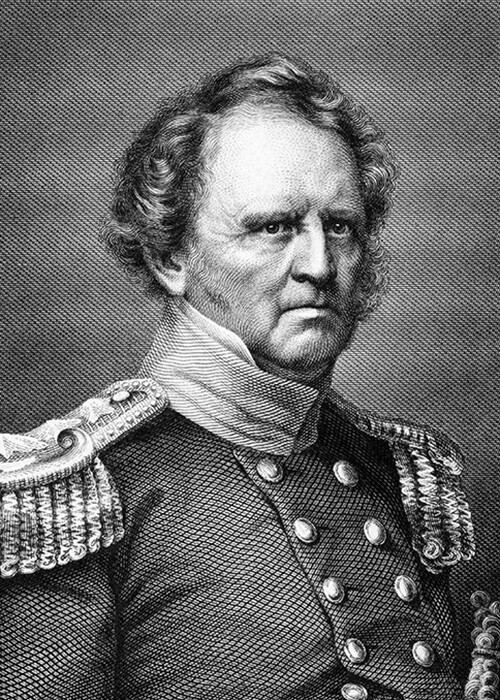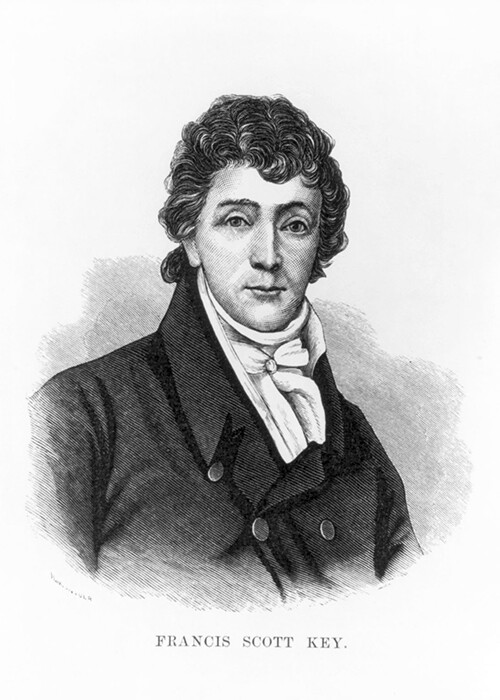The War of 1812, sometimes called the second war for independence, officially began on 18 June 1812. Typically thought to be a war between the British and Americans, other countries and several Native American tribes also fought in this war. Let’s take a closer look at who fought in the War of 1812 and who allied with the British or the Americans.
What Groups Fought in the War of 1812?
The Canadians
Upper Canada was a British colony at the time. It was heavily populated with American Loyalists and refugees after the American Revolutionary War. The Americans who stayed loyal to Britain and fought alongside the British during the American Revolution were given land grants to settle in the Upper Canada region.
The U.S. thought these persons may side with the Americans because many of them were born in the United States and still had family there. This was not the case. Canadians fought with the British to stave off an American invasion of Upper Canada.
The Native Americans
If you ask most people who the Native Americans sided with during the War of 1812, most will say it was the British. The British certainly had the monopoly on support from Native American tribes. However, you may be stunned to learn some Native American tribes sided and fought with the Americans. It is estimated that nearly 10,000 Native Americans fought on the side of the British in the War of 1812. Take a look at the chart below to see which tribes sided with the U.S. and which tribes sided with Britain.
| Native American Tribe | Who They Allied With |
| Abenaki | Britain |
| Creek (Red Sticks) | Britain |
| Creek (White Sticks) | United States |
| Choctaw | United States |
| Chickasaw | United States |
| Cherokee | United States |
| Chickamauga | Britain |
| Delaware | Britain |
| Fox | Britain |
| Iroquois Confederacy (Mohawk, Oneida, Tuscarora, Onondaga, Cayuga, and Seneca) | Britain |
| Kickapoo | Britain |
| Ojibwe | Britain |
| Odawa | Britain |
| Mascouten | Britain |
| Miami | Britain |
| Potawatomi | Britain |
| Sauk | Britain |
| Shawnee | Britain |
| Sioux | Britain |
| Winnebago | Britain |
Spain
Spain never officially joined the War of 1812, but they did ally themselves with the British and protect their lands from the Americans. Parts of Florida, Texas, Alabama, and Mississippi were under Spanish rule at the time. When Americans tried to invade these Spanish strongholds, Spain was forced to fight to protect their lands.

The United States
Most soldiers and sailors who fought in the War of 1812 were not part of the regular army. These fellows came from any of the 18 states and territories making up the U.S. at that time. They were usually between the ages of 18 and 30 but could be as young as 10 and as old as 70. For this reason, you might search your family tree for any men born between 1742 and 1804 to discover a War of 1812 veteran.
At the start of the war, the U.S. Army had about 7,000 men. By the end of the war there were about 35,000 American regulars and 458,000 militiamen! Many of those fighting were part of local militias and were likely your average farmers or tradesmen.
Great Britain
Great Britain had a large fighting force at the beginning of the war. It is estimated they had about 243,000 regulars at that time. Their forces grew to add another 50,000 to the regulars, about 4,000 in militiamen, and roughly 10,000 Native American warriors.
Prominent Figures of the War of 1812

Tecumseh
Tecumseh was a Shawnee warrior chief. He worked to align the many Native American tribes in hopes of forming an autonomous nation in which their lands could be preserved. Chief Tecumseh sided with the British, and he and his warriors helped the British succeed in the Battle of the Wabash.
Tecumseh also fought alongside the British in the Battle of Fallen Timbers. That battle ended in the Treaty of Greenville, in which the Native Americans lost much of their land in the Northwest Territory. Interestingly enough, Tecumseh would not sign the treaty. It was his opinion he did not have the right to sign away land that belonged to all native peoples.
On one occasion when Tecumseh was away from his beloved Prophetstown, William Henry Harrison’s forces attacked and burned the village in what was later called the Battle of Tippecanoe. When Tecumseh returned to find the village abandoned and destroyed, he rallied his warriors and helped the British in the Battle of Detroit.

Detroit fell to the hands of the Americans. Boosted by their victory, America invaded Upper Canada and British Major General Henry Procter’s troops and Tecumseh’s warriors were forced to flee. The Americans pursued them to the Thames River. There a battle ensued and on 5 October 1813, the great Shawnee warrior Tecumseh was killed.
Major General Sir Isaac Brock
Major General Sir Isaac Brock, known as the “Hero of Upper Canada,” was a high-ranking British soldier who led the British in the War of 1812. He had joined the military at the age of just 15.
Isaac Brock assumed control over British troops in Upper Canada. In 1812, he organized a militia and armed Native American warriors, and he and his troops defended Upper Canada against the American invasion.
Brock was awarded knighthood of the Order of the Bath after his success in taking Detroit from the United States in August 1812. On 13 October 1812, Isaac Brock’s forces defeated the U.S. at the Battle of Queenston Heights. Unfortunately, Major General Sir Isaac Brock was mortally wounded in the battle and died.

Laura Secord
Laura Secord is considered the heroine of the War of 1812. Laura and her family lived in Queenston. Her husband was injured at the Battle of Queenston Heights, and she rescued him from the battlefield. Some months later, on the evening of 21 June 1813, Laura heard about an American attack being planned against Captain James FitzGibbon and his troops.
Secord decided she must take action, and on the early morning of 22 June 1813, she set out on foot to warn FitzGibbon. She was unable to take the road for fear of being apprehended by U.S. forces. Instead, her roundabout journey took her an alleged 20 miles through wooded and overgrown areas. In the evening, she came upon a group of native warriors. After explaining her reason to find FitzGibbon, they led her the remainder of the way to the house of John DeCou.
On June 24, U.S. forces attacked the British near Beaver Dams. FitzGibbon, his men, and the native allies claimed victory over the American soldiers, which was due in part to the early warning provided by Laura Secord.

Winfield Scott
Winfield Scott was a U.S. Army soldier who fought in the War of 1812. Though he experienced some setbacks in his early military career, he was made lieutenant colonel and served in the War of 1812. At the Battle of Queenston Heights, he and his forces attacked the British and their Native American warrior allies. Scott did not have reinforcements, and the British were lying in wait for them. Scott was forced to surrender, and he and his troops were taken prisoners.
Time after time, Scott was thwarted, not by British troops, but by the inept American forces and their leaders. He was overcome with disgust for the mistakes being made and decided to report it to the U.S. secretary of war. The secretary was so impressed by Scott that he gave him the rank of brigadier general on 19 March 1814. Winfield Scott became the youngest general in the U.S. Army.
Winfield Scott had a lifelong career in the U.S. military and participated in many conflicts and wars, including the U.S. Civil War. After retirement, he died at West Point, New York, on 29 May 1866.

Robert Ross
Robert Ross was a British Army officer. He was given command of a brigade that joined the fleet of Vice Admiral Sir Alexander Cochrane. Ross and Cochrane’s forces were to raid the Chesapeake Bay as a diversion. Their forces sailed into the bay and up the Patuxent to Benedict, Maryland, on 18 August 1814.
At Benedict, Ross marched his forces over land to Washington, D.C. His troops defeated the U.S., who were ill prepared to defend their capital. On 24 August 1814, the British burned the Capitol, the Supreme Court, the White House, and other public buildings.
Major General Robert Ross died just a few weeks later on 12 September 1814. He was shot in action at the Battle of Baltimore. He was buried on British soil in Nova Scotia.

Francis Scott Key
Francis Scott Key, the man who wrote the words to “The Star-Spangled Banner,” was born in Frederick County, Maryland, in 1779. He grew up in a wealthy and prominent family.
Key married and became a well-known attorney. In 1812, he was against the U.S. declaration of war entirely; however, he ended up serving in the Georgetown Light Field Artillery. In doing so, he was called upon to negotiate the release of American Dr. William Beanes, who had been taken prisoner by the British.
After he and John Skinner secured Beanes’s release, they were escorted to a ship on which they had a front-row seat to the British attack on Ft. McHenry. The American forces withstood the British bombardment, and on the morning of 14 September 1814, Key saw a large American flag being flown over Ft. McHenry. He was immensely inspired and penned the words to what is today titled “The Star-Spangled Banner.”
After the war, Francis Scott Key continued to practice law. On 11 January 1843, he fell ill with pleurisy, an inflammation of the lungs, and died at 63 years old.
Are You Related to Someone Who Fought in the War of 1812?
Do you have ancestors who fought in the War of 1812? You can see if you do by searching your family tree or by visiting the FamilySearch War of 1812 relative finder.
In the relative finder, you can view your relatives’ pension record and see exactly how they are related to you. You never know, you may be related to one of the prominent figures of the War of 1812!

